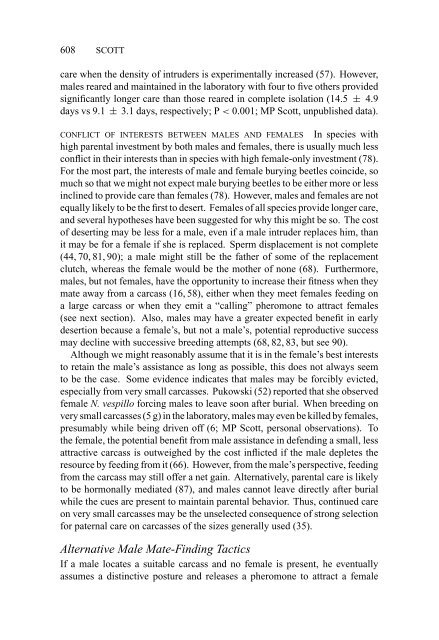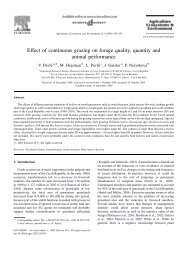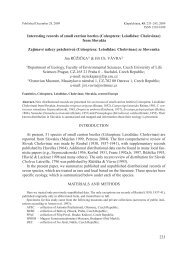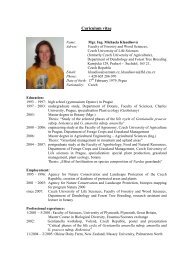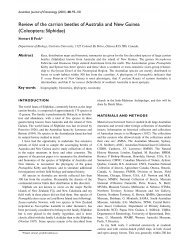THE ECOLOGY AND BEHAVIOR OF BURYING BEETLES
THE ECOLOGY AND BEHAVIOR OF BURYING BEETLES
THE ECOLOGY AND BEHAVIOR OF BURYING BEETLES
You also want an ePaper? Increase the reach of your titles
YUMPU automatically turns print PDFs into web optimized ePapers that Google loves.
608 SCOTTcare when the density of intruders is experimentally increased (57). However,males reared and maintained in the laboratory with four to five others providedsignificantly longer care than those reared in complete isolation (14.5 ± 4.9days vs 9.1 ± 3.1 days, respectively; P < 0.001; MP Scott, unpublished data).CONFLICT <strong>OF</strong> INTERESTS BETWEEN MALES <strong>AND</strong> FEMALES In species withhigh parental investment by both males and females, there is usually much lessconflict in their interests than in species with high female-only investment (78).For the most part, the interests of male and female burying beetles coincide, somuch so that we might not expect male burying beetles to be either more or lessinclined to provide care than females (78). However, males and females are notequally likely to be the first to desert. Females of all species provide longer care,and several hypotheses have been suggested for why this might be so. The costof deserting may be less for a male, even if a male intruder replaces him, thanit may be for a female if she is replaced. Sperm displacement is not complete(44, 70, 81, 90); a male might still be the father of some of the replacementclutch, whereas the female would be the mother of none (68). Furthermore,males, but not females, have the opportunity to increase their fitness when theymate away from a carcass (16, 58), either when they meet females feeding ona large carcass or when they emit a “calling” pheromone to attract females(see next section). Also, males may have a greater expected benefit in earlydesertion because a female’s, but not a male’s, potential reproductive successmay decline with successive breeding attempts (68, 82, 83, but see 90).Although we might reasonably assume that it is in the female’s best intereststo retain the male’s assistance as long as possible, this does not always seemto be the case. Some evidence indicates that males may be forcibly evicted,especially from very small carcasses. Pukowski (52) reported that she observedfemale N. vespillo forcing males to leave soon after burial. When breeding onvery small carcasses (5 g) in the laboratory, males may even be killed by females,presumably while being driven off (6; MP Scott, personal observations). Tothe female, the potential benefit from male assistance in defending a small, lessattractive carcass is outweighed by the cost inflicted if the male depletes theresource by feeding from it (66). However, from the male’s perspective, feedingfrom the carcass may still offer a net gain. Alternatively, parental care is likelyto be hormonally mediated (87), and males cannot leave directly after burialwhile the cues are present to maintain parental behavior. Thus, continued careon very small carcasses may be the unselected consequence of strong selectionfor paternal care on carcasses of the sizes generally used (35).Alternative Male Mate-Finding TacticsIf a male locates a suitable carcass and no female is present, he eventuallyassumes a distinctive posture and releases a pheromone to attract a female


